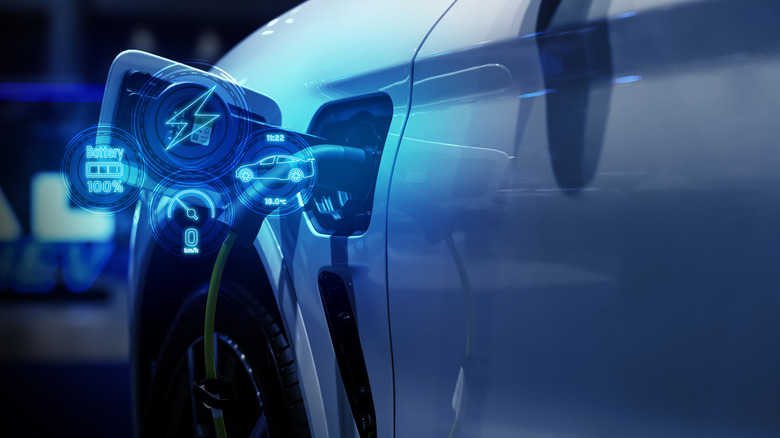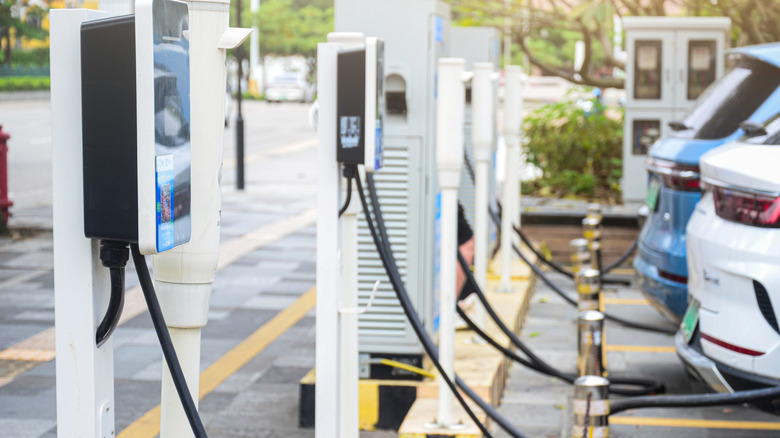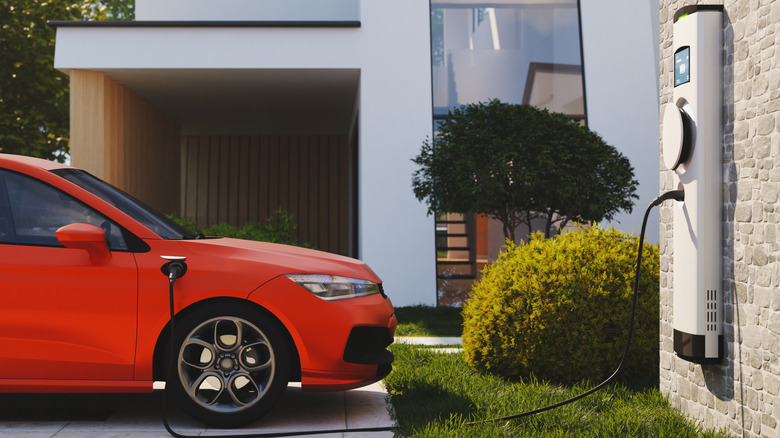Should You Avoid Fast Charging Your EV All The Time?
The rise of electric vehicles is an important milestone in the automotive industry because it signifies a change toward environmentally friendly and economically sound transportation. Government support and rising sales are key indicators of market expansion and the growth of EVs. However, there are still several significant barriers that need to be overcome before EVs are fully adopted, including its high price, the scarcity of charging stations, and its limited range and long charging times. To try to work around the long charging times, some EV owners choose to fast-charge their cars, but there is a risk in doing this, as frequent fast charging can potentially accelerate EV battery deterioration.
There are several levels of charging for electric vehicles, which are categorized from one to three. Each is based on power output and charging speed. For level 1 trickle charging, it has the lowest voltage level at 120 volts, and its miles of range per hour is 4 to 5 miles. Level 2 is 240 volts and has a miles of range per hour of 12 to 80 miles, while level 3 is 480 plus volts, with a miles of range per hour of 60 to 100 miles in 20 minutes.
For the majority of EVs, fast charging is generally safe, but several factors could shorten battery life. Battery stress can be increased by charging in extremely hot or cold settings, especially if the battery is not preconditioned. Fast charging in warmer conditions can also speed up battery deterioration. A car battery can degrade if it is fast-charged while it is very hot, very cold, or at a full or low charge level, since batteries have greater resistance when charged from very low or almost full capacity.
Protecting the battery life
For electric vehicles, preconditioning means two distinct things. The first kind of preconditioning relates to the cabin, where it involves defrosting, prewarming, or cooling the cabin before using the car. The second kind of preconditioning is specific to the battery, which requires heating or cooling it to the ideal temperature before charging, which allows the battery to charge more efficiently.
The most balanced approach to charging an EV is to avoid excessive charging when using the battery on a daily basis, and it is best to do between twenty and eighty percent charge levels. If maximum range is the objective, then it must be charged to one hundred percent. For everyday use, however, Level 2 charging is typically advised due to its slower and more consistent charge, although Level 3 direct current rapid charging can be strategically used for longer travels or situations when quickly getting a full charge is needed.
EV manufacturers advise against quick charging when the battery is nearly dead or near full. Another important consideration is high mileage use, as vehicles that are used for regular long-distance travel and are fast-charged can wear out their batteries more. This risk, however, can be mitigated if the battery management system of the EV is operating at optimum level. Lastly, as a way to avoid damaging the battery, several manufacturers recommend restricting fast charging to just eighty percent because regularly fast-charging to 100 percent puts more strain on the battery due to the last charging stage to full capacity tends to heat the cells more.
Balanced approach for best results
The most common type of batteries used in cars today is made from lithium-ion, and it is made from a combination of rare earth elements, including lithium iron phosphate and nickel manganese cobalt. In comparison to other battery technologies, lithium-ion has proven to be the most efficient so far and provides a mix of high energy density, extended lifespan, and affordable price. This makes them perfect for powering electric cars, where weight reduction and driving range are essential.
The future of EV batteries and charging technologies points towards bigger capacities, longer ranges, and shorter charging times. These capabilities will be derived from advancements in materials and energy storage, that give more power and storage. These include solid-state batteries, graphene, zinc, iron, and sodium-based batteries, and refinements in current lithium-ion technology. For battery charging, recent developments in EV charging technologies have included high-power charging and wireless charging, both of which are seen to greatly improve the charging speed and efficiency compared to existing systems.
Despite its convenience, regularly quick charging an electric vehicle is generally not advised. Compared to regular charging, quick charging, over time, can eventually cause more battery deterioration. Frequent and extended fast charging can still exacerbate battery aging, even if newer EVs have advanced battery management systems that reduce some of the negative effects. For electric vehicle owners, the choice to either fast charge or regular charge should be based on their needs. Sensible charging will help preserve battery health and avoid costly repairs or replacements in the long term, and rather than avoid fast charging entirely, it is best to utilize that option when time and circumstance call for a quick recharge while on the road, but for daily use, regular charging would be sufficient for an EV's power requirements.


